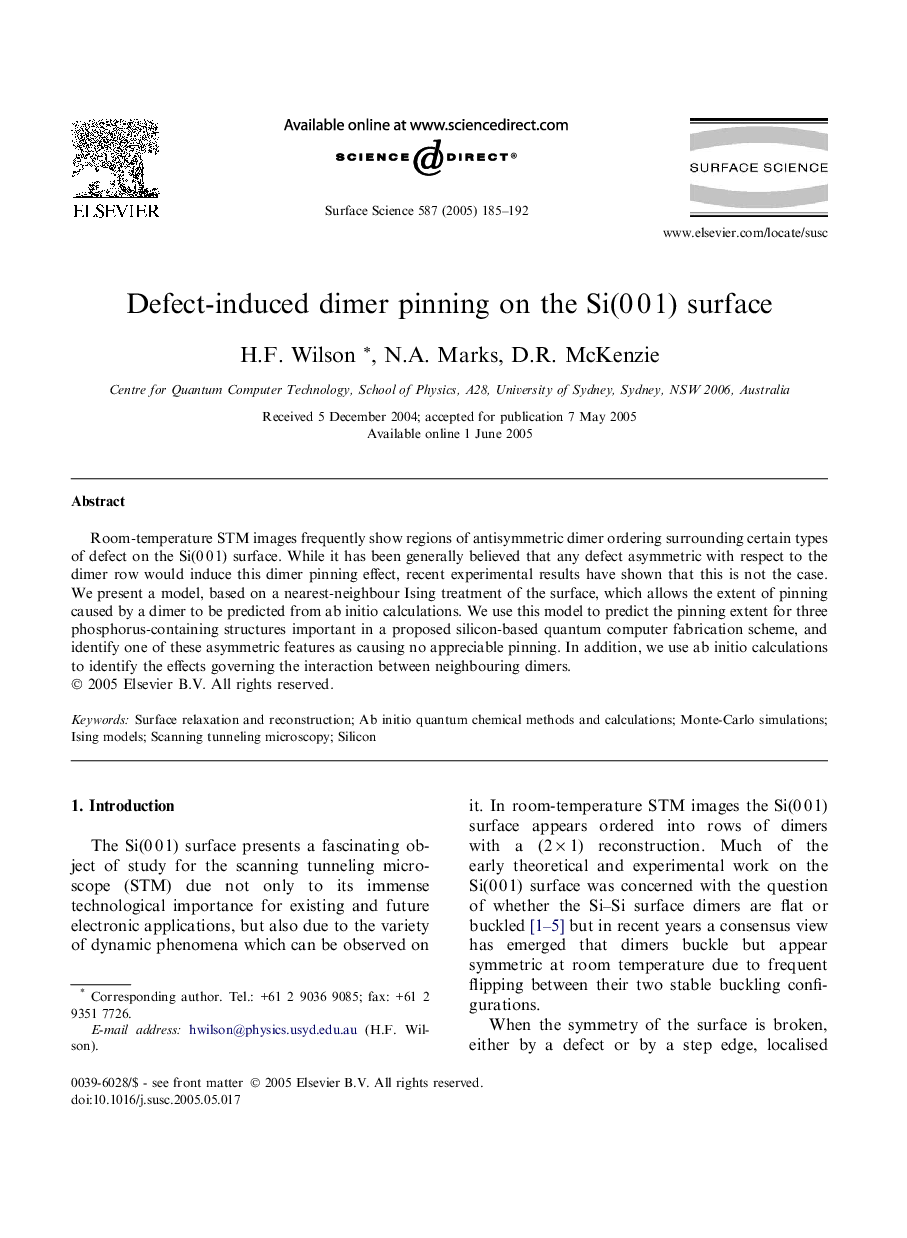| Article ID | Journal | Published Year | Pages | File Type |
|---|---|---|---|---|
| 9594648 | Surface Science | 2005 | 8 Pages |
Abstract
Room-temperature STM images frequently show regions of antisymmetric dimer ordering surrounding certain types of defect on the Si(0Â 0Â 1) surface. While it has been generally believed that any defect asymmetric with respect to the dimer row would induce this dimer pinning effect, recent experimental results have shown that this is not the case. We present a model, based on a nearest-neighbour Ising treatment of the surface, which allows the extent of pinning caused by a dimer to be predicted from ab initio calculations. We use this model to predict the pinning extent for three phosphorus-containing structures important in a proposed silicon-based quantum computer fabrication scheme, and identify one of these asymmetric features as causing no appreciable pinning. In addition, we use ab initio calculations to identify the effects governing the interaction between neighbouring dimers.
Keywords
Related Topics
Physical Sciences and Engineering
Chemistry
Physical and Theoretical Chemistry
Authors
H.F. Wilson, N.A. Marks, D.R. McKenzie,
